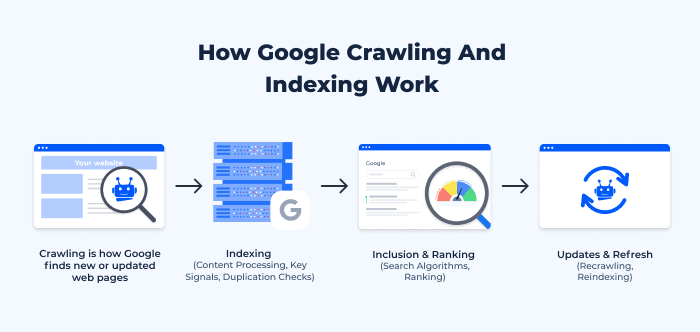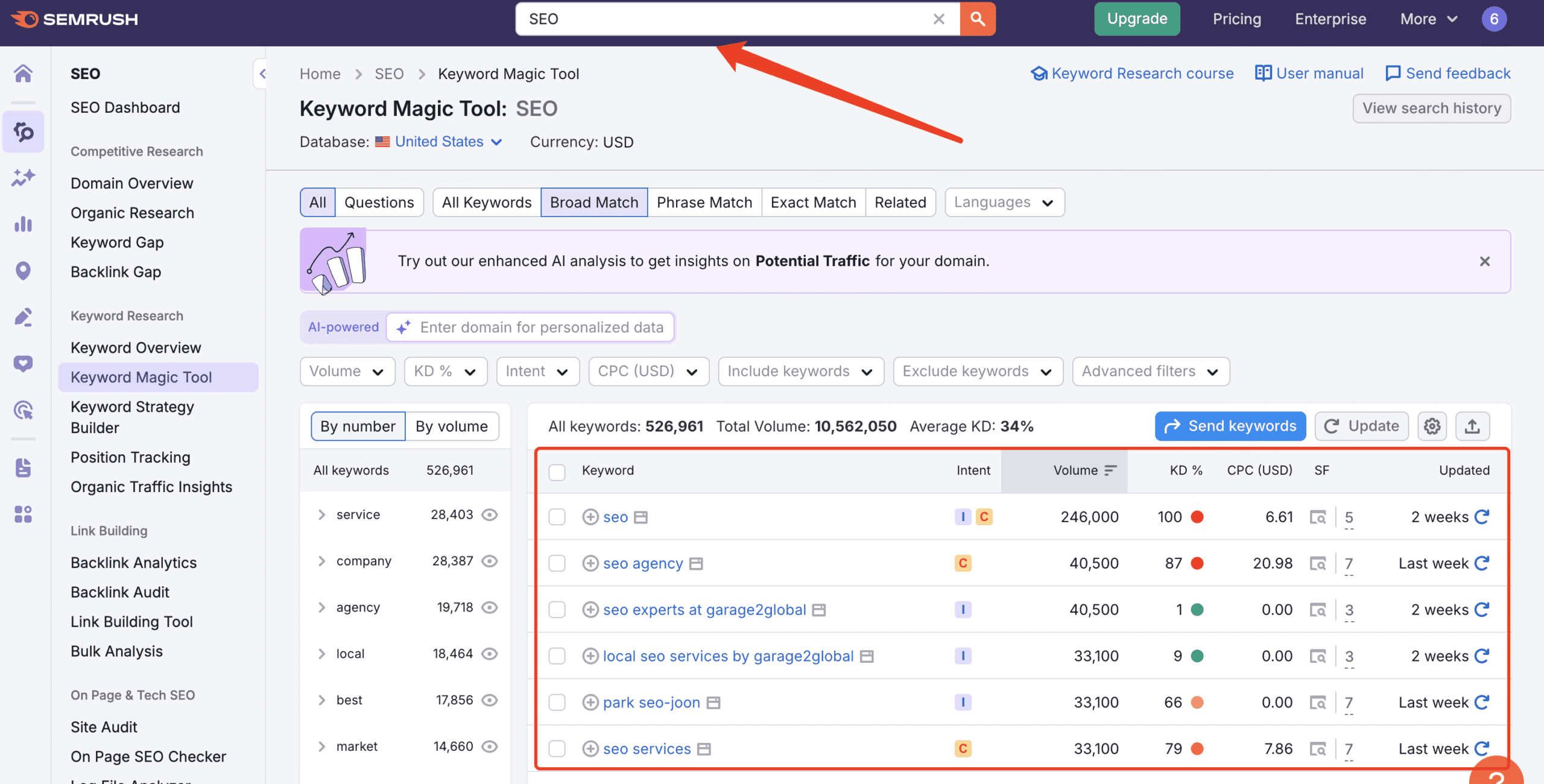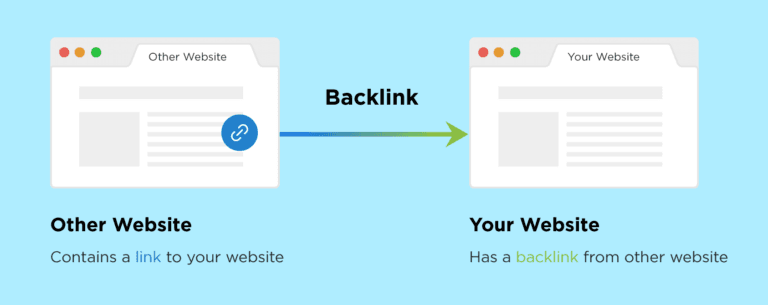SEO is one of the indispensable channels of online marketing, mainly through website optimization to obtain search engine traffic. This article will introduce in detail the relevant knowledge about SEO. Through this article, you will learn all about SEO.
What is SEO?
SEO is the abbreviation of “Search Engine Optimization”. It is one of the areas within online marketing. It mainly improves a website’s ranking position on search engines such as Google, Bing, or others by optimizing aspects like the website’s content quality and browsing experience.
Websites with higher rankings can attract more traffic, bringing more customers and conversions to the business. This is also a key reason why most enterprises or individuals engage in SEO.
Key points of SEO optimization:
- Search Engine Optimization primarily improves a website’s ranking on search engines through content quality, keyword research, enhancing user experience, and other aspects.
- The working principle of search engines mainly consists of three steps: crawling (obtaining website content), indexing (storing website content), and ranking (recommending high-quality content to users through complex algorithms).
- Key factors for keyword ranking: high-quality content that meets user needs, high-quality backlinks, website loading speed, user experience, and website operating time.
- Compared with paid advertising, the cost of acquiring traffic through SEO optimization is lower, which also leads to fierce competition for rankings.
Why is SEO important?
Google holds over 91% of the global search engine market share, with over 8.5 billion searches conducted daily. It is a crucial marketing channel for businesses and brands. You may have seen many companies spending heavily on ads, but once the ads stop, website traffic can plummet sharply, potentially dropping to zero.
However, websites that have optimized their SEO will continue to attract users through search engine clicks as long as they consistently update their content. While SEO-driven traffic may not yield results as quickly as advertising and requires long-term commitment, it offers a more cost-effective solution compared to advertising in the long run.
Additionally, with the rapid development of the internet in recent years, users have become increasingly averse to clicking on content labeled as ads. Optimizing user experience through website improvements to attract search engine traffic is more conducive to user conversion or transactions.
How should SEO optimization be done?
If you want to learn how to optimize SEO, the first thing you need to do is understand how search engines work. Search engines use advanced algorithms to determine a website’s ranking in search results. Only by thoroughly understanding this mechanism can you better formulate an SEO optimization plan.
How Search Engines Work
1. Crawlers Scrape Web Page Content
After search engines discover your website, they will crawl through the links on your web pages (such as navigation links on your website, internal links in articles, and even external links from other websites pointing to yours) to scrape all accessible page content—text, images, video links, and even title tags and description tags in the code. However, they are also quite “picky”: If your website loads slowly or has poor-quality content (such as plagiarized content or AI-generated content), crawlers may stop crawling it.
2. Indexing Webpage Content
After obtaining website content, search engines do not display it directly in search results. Instead, they first store it in an index database (think of it as a library). They then analyze the content, with low-quality or high-duplication pages being categorized into the “low-quality archive” section. High-quality content with high originality and authority is categorized into the “high-quality archive” section. Like books stored in a library, the index database categorizes and stores each webpage to facilitate quick retrieval when users search.
3. Ranking Scoring
When someone searches for content, the search engine retrieves all relevant webpages from the index database that match the search query and scores them using an algorithm. Webpages with higher scores rank higher.
Although this scoring algorithm is complex, the core factors include:
Relevance: The more relevant the webpage content is to the search query, the higher the score;
Credibility: For example, if ZCSEO is an SEO blog and other SEO blogs link to my webpage, this is equivalent to peer recommendations, which increases the website’s credibility score.
User experience: Do users immediately close the page after clicking on it? The longer users stay on the page and resolve their issues through the content without visiting other websites, the higher the website’s score.
Finally, a total score is derived from these factors, and websites with higher scores rank higher.

SEO optimization methods
Research keywords
First, understand what users are searching for and what their needs are, then use tools to mine keywords with traffic. Here, ZCSEO recommends using Semrush (https://www.semrush.com) to mine industry keywords. After entering keywords, you can see all the long-tail keywords, which is very convenient.

After identifying keywords, we need to categorize them. For example, keywords like “coffee maker” should be optimized through product pages, but long-tail keywords like “Which coffee maker brand offers the best value for money?” should be optimized through article pages to better meet user needs.
If you’re unsure which page to use for optimizing a keyword, you can directly search for the keyword on Google and reference how competitors are optimizing their rankings using different pages.
Content Creation
Once we have identified the keywords, we can begin creating content. Taking an article page as an example, before writing the content, we need to consider: What exactly are users searching for when they search for this keyword? For instance, if someone searches for “What to do if my laptop battery life is short,” high-quality content would list three specific reasons (battery degradation, too many background programs, system settings issues), followed by optimization steps and tool recommendations.
We can first reference the content of top-ranking webpages on Google, then create the article based on our own understanding.
Article writing requirements: original content, meets user needs, and prohibits the direct use of AI-generated content.
External Link Optimization
External links are links to your website that appear on other websites. A high-quality external link can significantly improve your website’s search engine ranking. The more external links your website has, the more beneficial it is for SEO, as search engines will perceive your website as having external recognition.
As mentioned earlier, only high-quality external links can help improve your website’s ranking. External links posted on irrelevant forums or in blog comment sections are ineffective.

Website Structure Optimization
Breadcrumb Navigation: Good navigation is like a supermarket shelf categorized as “Food → Snacks → Potato Chips.” When users first enter the website, they can immediately locate the content they are looking for through the top navigation bar (e.g., “Products → Categories → Specific Models”).
URL Structure: Avoid using URLs like “www.xxx.com/p=123&a=456,” which are hard to read. Instead, use something like “www.xxx.com/men/jackets/winter,” which is much better. The former is like a shipping label that only says “Building 3, Floor 5,” while the latter is “XX Road, Building 3, Unit 5, Room 101,” which helps search crawlers quickly understand the content theme of the webpage.
Internal links: Every page should have links to related content. For example, in an article about “coffee machine cleaning tips,” add a link to “recommended cleaning tools.” This not only guides users to click on related content but also passes weight to other pages on the website through the links.
Structure should be flat: The number of clicks from the homepage to any inner page should ideally not exceed three (e.g., homepage → category page → detail page). Pages that are too deeply nested are highly unfavorable for crawlers to crawl.
Frequently Asked Questions About SEO
Q: How long does it take to see results from SEO?
A: It usually takes 3-6 months for a new website to see results, with 6-12 months being the most effective. New websites often have low initial credibility and need to build up their reputation through high-quality articles, external links, and other methods.
Q: Can one person do SEO?
A: Of course, both a team and an individual can do SEO. SEO is a long-term process that requires time and effort to gradually see results, and it’s often difficult for an individual to persevere.
Q: What are some methods for building external links?
A:There are two main methods: free and paid. For free, you can post high-quality articles on sites like Quora and Reddit and include a link to your website. Paid methods generally involve finding guest bloggers and paying them to include a link to your website when they post their articles (this works best).

